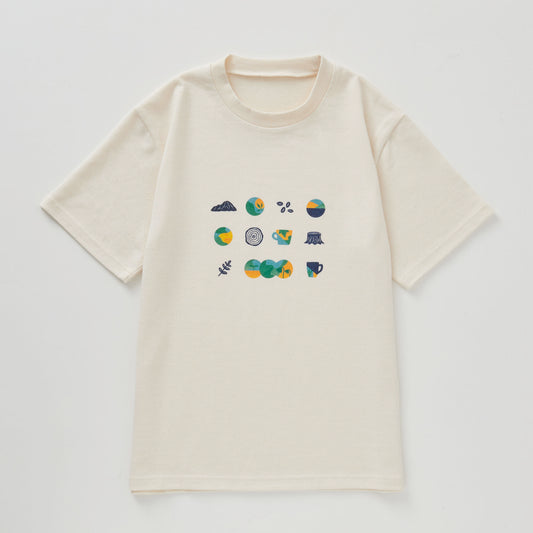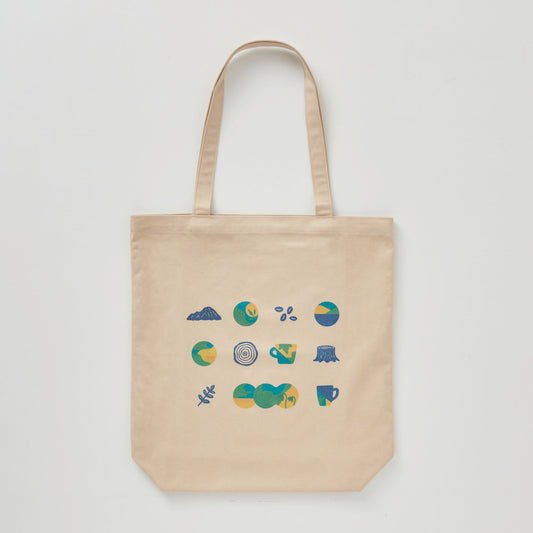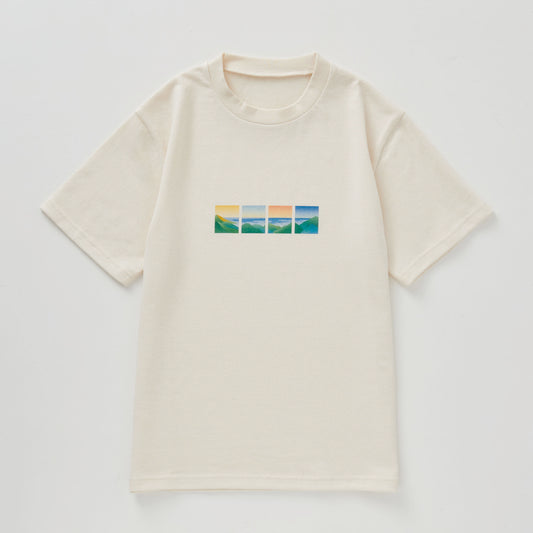A collaboration that incorporates Oshima Tsumugi and mud dyeing techniques from Amami Oshima
Oshima Tsumugi, a traditional textile representing Amami Oshima in Kagoshima Prefecture, dates back to before 1800 and is said to be the textile with the longest history and tradition in Japan. The process of making Oshima Tsumugi can be broadly divided into more than 30 steps , starting with the design, and then combining the warp and weft threads as if gathering small dots to paint a picture, taking nearly half a year to complete. With its intricate ikat patterns that do not allow even a single thread to slip, and its characteristics of being light, warm, flexible, and not easily undone, Oshima Tsumugi is counted as one of the three great textiles in the world, along with Gobelin tapestries and Persian carpets.
The warp threads are Oshima Tsumugi silk threads, and the weft threads are made by twisting together silk threads and paper threads, resulting in a fabric that combines the luster of silk with the soft feel of paper threads . In addition, some of the silk threads are made from leftover threads from the Oshima Tsumugi manufacturing process.
Mud dyeing is one of the processes in making authentic Amami Oshima Tsumugi. First, the fabric is dyed with a dye made from boiled Sharimbai (called techi in Amami dialect) and lime water. After repeatedly dyeing it brown, the fabric is kneaded in a muddy field. The tannins in the techi combine with the iron in the mud of Amami Oshima, gradually dyeing it a dark brown color. We have adopted this dyeing technique, unique to the rich nature of Amami Oshima, for our products.
Project video: https://youtu.be/2U8Ry-tGEYk



